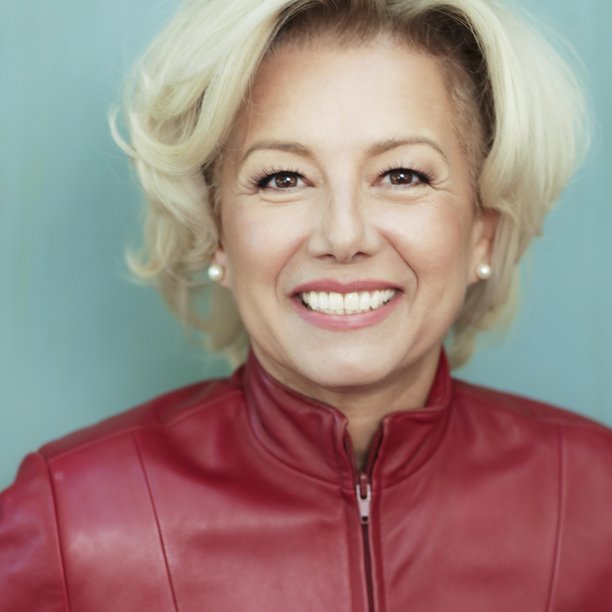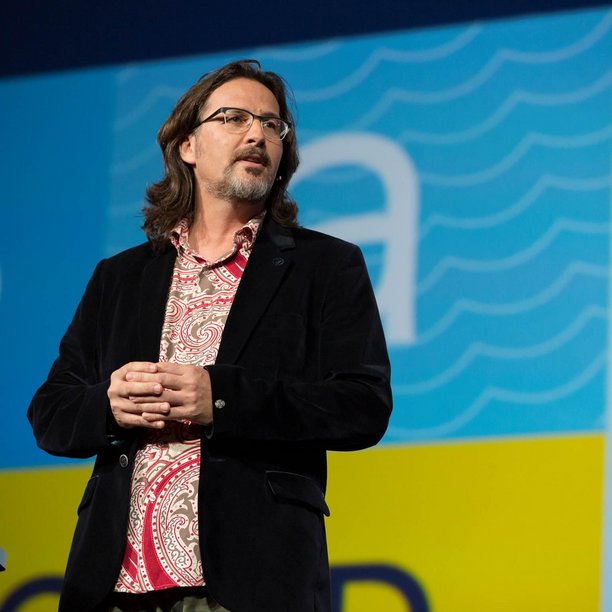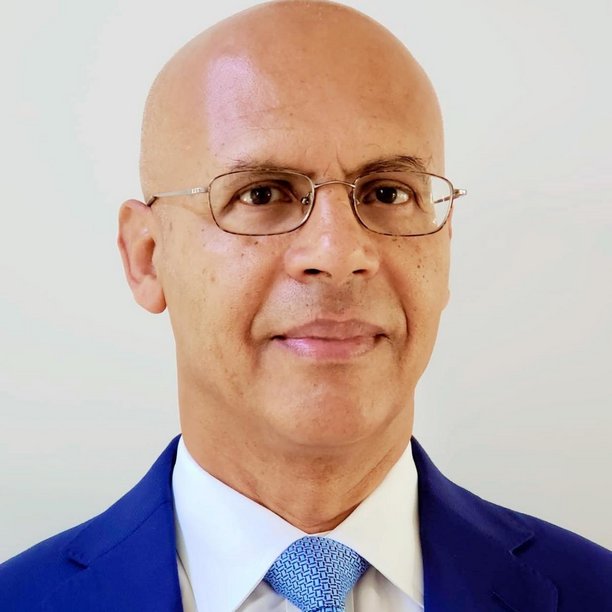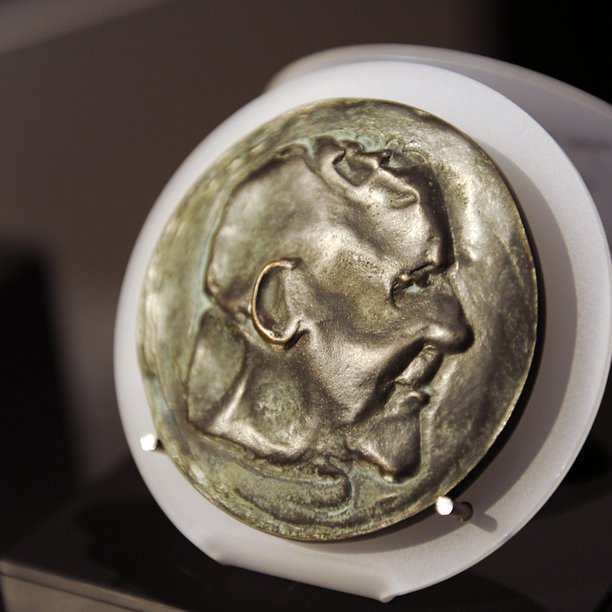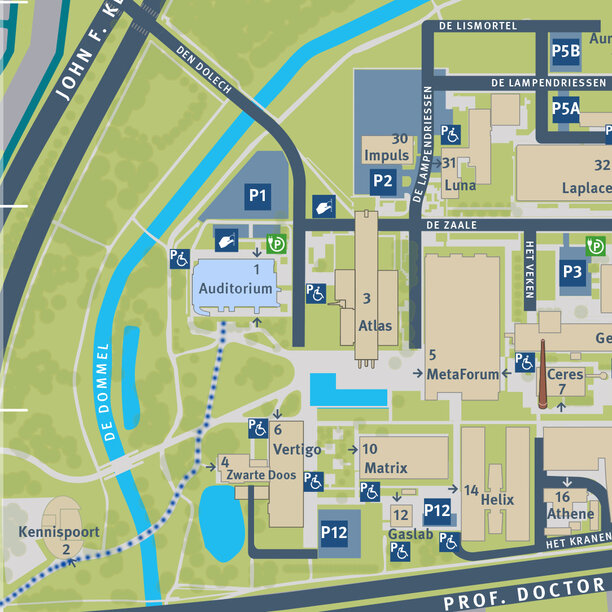Date
Thursday April 21, 2022 from 9:00 AM to 6:00 PMLocation
Blauwe zaalAddress
Meijerstraat 549 6417BV De WeerePhone
+31(0)6-77302846Organizer
ConferencesCo-organizer
Philips Research and SignifyPrice
FreeBuilding
AuditoriumWelcome
Welcome on the event website of Holst Symposium and Holst Memorial Lecture Award 2022.
The Holst Memorial Lecture and Symposium are organized by Philips Research, Signify Research and Eindhoven University of Technology (TU/e). This year’s Holst Lecture, the 44th since 1977, will be given by Dr. Michael Grieves. Dr. Michael Grieves is an internationally renowned expert on Digital Twins, a concept that he originated, and organizational digital transformation. His focus is on product development, engineering, systems engineering and complex systems, manufacturing, especially additive manufacturing, and operational sustainment

Program
| 09:00 - 09:30 | Registration |
| 09:30 - 09:35 | Word of welcome (Symposium): Frank Baaijens |
| 09:35 - 10:00 | Introduction to Symposium Theme and Program |
| 10:00 - 10:30 | Laura Tenenbaum (incl. 10 min Q&A) |
| 10:30 - 11:00 | Ahmed El Adl (incl. 10 min Q&A) |
| 11:00 - 11:30 | Coffee break |
| 11:30 - 12:00 | Erwin Rademaker (incl. 10 min Q&A) |
| 12:00 - 12:45 | Panel discussion Chair (Where is DT Heading?) |
| 12:45 - 13:30 | Lunch break |
| 13:30 - 14:45 | Selection of demo's (TU/e, Philips, Signify) |
| 14:45 - 15:15 | Marco Viceconti (incl. 10 minutes Q&A) |
| 15:15 - 15:30 | Wrap Up and Conclusion |
| 15:30 - 16:00 | Break |
| 16:00 - 16:15 | Word of welcome (Memorial Lecture) and introduction Michael Grieves: Henk van Houten |
| 16:15 - 17:00 | Holst Memorial Lecture Michael Grieves |
| 17:00 - 17:10 | Award Ceremony: Geert Depovere |
| 17:10 - 18:15 | Reception and drinks |
Holst Symposium: Digital Twinning
The Holst Symposium will be a live and interactive (networking) event and bring together specialists and students from varied disciplines from both the academic and the business world who will be challenged to present their views on future developments of Digital Twinning in their field. The selection of invited speakers is based on topics with the potential to inspire. The Holst symposium will consist of (concise) lectures, presentations, panel discussion and demo’s and will be concluded by the Holst Memorial Lectureand an Award Ceremony.
Digital Twinning is gaining importance across disciplines in the Brainport Eindhoven Eco System. Not only in Science and Research, but also in Manufacturing, Industrial and Healthcare applications and Urban Planning. Digital Twinning is closely connected to relevant topics like the Internet of Things, Connected Nodes, Smart Cities, Artificial Intelligence, Robotics, Industry 4.0, Hospital 4.0, Augmented and Virtual Reality and Smart Mobility. Due to COVID19 measures, the Holst Memorial Lecture 2020 was postponed to 2022.
From Digital Twins in healthcare to the Human Digital Twin: pushing the boundaries of In Silico Medicine
The vision of a digital replica of the human body, which accounted for all its physiological functions, originates in the Physiome Project, which started in the early 90s. Europe followed in the mid-2000 with the Virtual Physiological Human initiative, which aimed to finalise such digital replicas to the support of clinical decisions (Digital Patient). This paved the way to the first generation of Digital Twin in healthcare, specialised patient-specific computer models that would predict quantities difficult or impossible to measure, but essential to guide the decision of the clinical management of that patient. Today Digital Twin in healthcare remain an important research subject, but they are also an industrial reality with dozens of products already certified for clinical use. But current solutions all pursue some low-hanging fruit: specific clinical decisions where the process to be modelled can be reasonably be confined to a particular organ, tissue, or cell. But many clinically relevant problems show a high level of entanglement, where the disease process involves multiple organ system, and manifest across multiple space-time scales. With the current approaches, developing Digital Twin solutions targeting such problems is prohibitively complex. We need to go back to the roots and think to a more systematic approach to the modelling of the human body, that we call the Human Digital Twin.
44th Holst Memorial Lecture Award
This year’s Holst Lecture will be the 44th since 1977.The nominated Holst Lecturer will join the ranks of eminent scientists and Nobel laureates like Philippe de Gennes, Hendrik Casimir, Ilya Prigogine, Arno Penzias, Nicholas Negroponte, Alan Heeger, J. Craig Venter and Shuji Nakamura. The first Holst Memorial Lecture was given in 1977 to commemorate the 21st anniversary of TU/e, Eindhoven University of Technology. With support from Philips Research, and (since 2018) Signify, the Holst Lecture became an annual tradition. Candidates for the Award are selected by a committee under the chairmanship of the Rector Magnificus of the TU/e, the CTO of Royal Philips and the CEO Research of Signify.
Gilles Holst
The general theme chosen for the Holst Memorial Lecture reflects the important contribution of dr. Gilles Holst (1886-1968) to research and technology in the Netherlands: ‘the development of applied sciences, particularly mathematics and the natural sciences, for the benefit of industry on the one side and their implications for society on the other.’ In his academic career Holst played an essential part in the discovery of superconductivity by Nobel Laureate H. Kamerlingh Onnes, whilst working at the University of Leiden in the Netherlands. However, Gilles Holst will be first and foremost remembered as the founding director of the famous ‘Nat Lab’, the Philips Physics Laboratory in Eindhoven, where he worked between 1914 and 1946. During his lifetime, Gilles Holst was chairman of two committees that were instrumental in the foundation ofc Eindhoven University of Technology in 1956.
Eindhoven region
The Eindhoven Region, often referred to as Brainport Eindhoven http://brainporteindhoven.com/ is Europe's leading innovative top technology region and home to Royal Philips, Signify, NXP semiconductors and ASML. Eindhoven University of Technology (TU/e) has according to Times Higher Education World University Ranking the highest score for collaboration with industry in the filed of academic and scientific research. One of TU/e distinguished emeriti was Edsger W. Dijkstra, one of the most influential members of computing science's founding generation and Turing Award winner 1972.
Award winning speaker
After the Lecture, the rector magnificus will present the Holst Memorial Lecturer with the Holst Memorial Lecture Award, a honorary medal designed by Dutch sculptor Jos Reniers. To honor the laureate, a dinner with speakers, Management of Philips Research and TU/e and the Scientific Committee will be organized.
History of Holst Memorial Lecture
The first Holst Memorial Lecture was held in 1977 to commemorate the 21st anniversary of the Technische Universiteit Eindhoven. With support from Philips Research, the Holst Lecture became an annual tradition. An eminent scientist is invited to deliver the lecture to an audience consisting of university staff, students, representatives from industry and other guests with a general interest in science and technology. The general theme chosen for these lectures reflects the important contribution of Dr. Gilles Holst to research and technology in the Netherlands: ‘the development of applied sciences, particularly mathematics and the natural sciences, for the benefit of industry on the one side and their implications for society on the other.’
Gilles Holst
In his own academic career Gilles Holst (1886-1968) played an important part in the discovery of superconductivity by Nobel Laureate H. Kamerlingh Onnes, whilst working at the University of Leiden. However, Gilles Holst will be first and foremost remembered as the founding director of the famous ‘Nat Lab’, the Philips Physics Laboratory in Eindhoven, where he worked between 1914 and 1946. Dr. Holst also was chairman of two committees that were instrumental in establishing the
second Dutch university of technology in Eindhoven in 1956.

-
Contact
bc. Joost Lemmensdr. Quinten Bos LLBPostmaweg5645KR Zuidermeer
